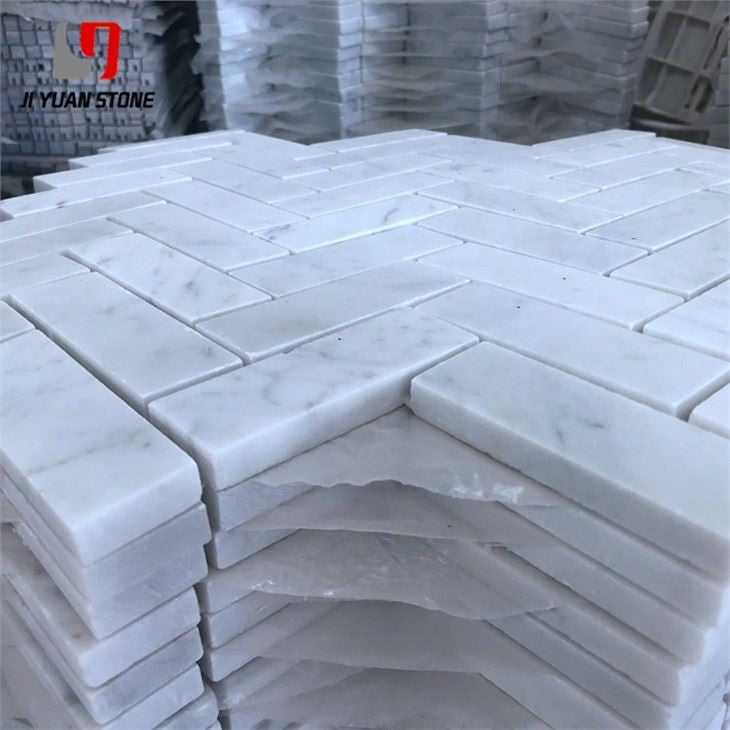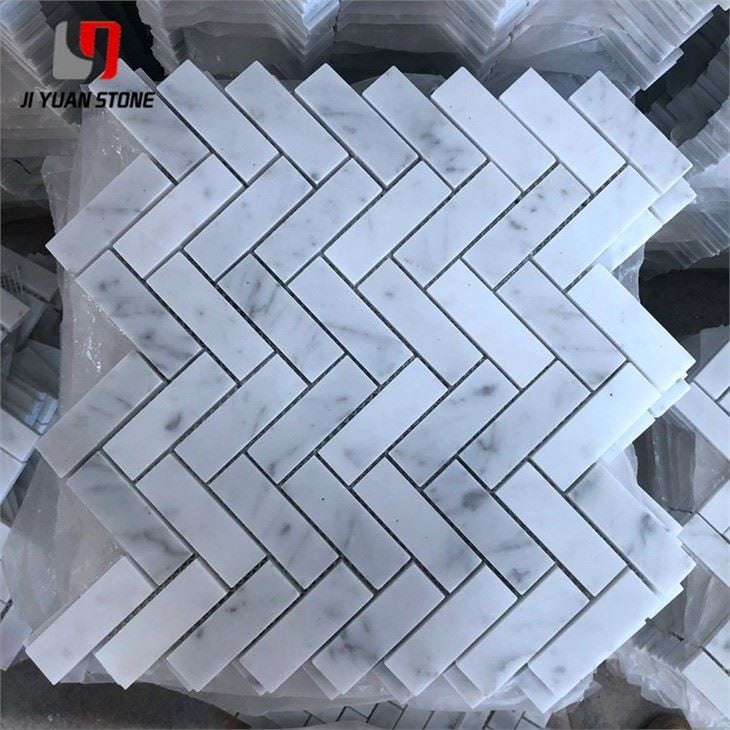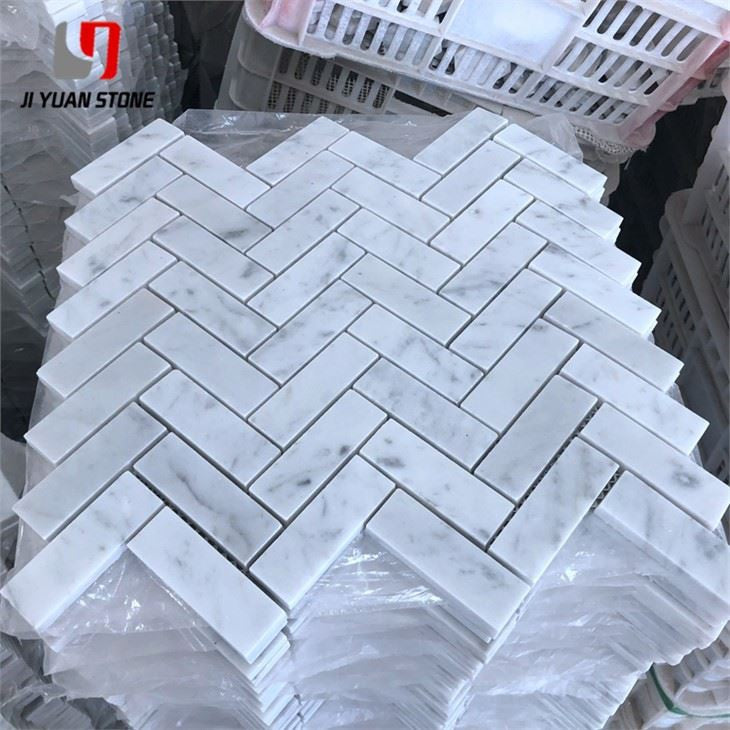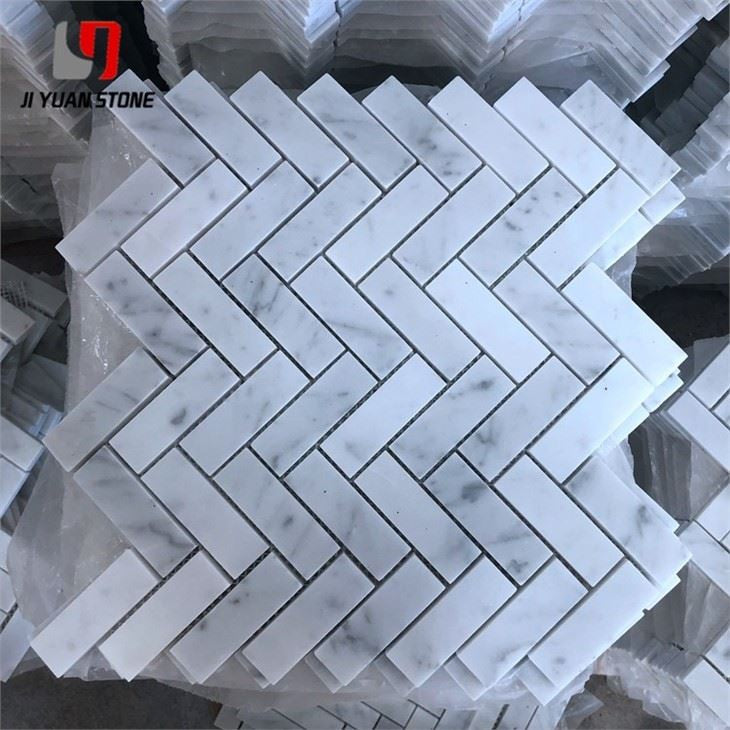Marble Chevron Mosaic Tile
Marble Chevron Mosaic Tile
The Marble Chevron Mosaic Tile is the perfect addition to any home. Made from high-quality marble, this tile not only adds a touch of elegance to any space, but it also provides durability and easy maintenance. With its unique chevron pattern, it adds a timeless charm to any room.
| Feature | Details |
|---|---|
| Material | Natural Marble Stone,Travertine,Limestone |
| Colour | As pictures show or customized |
| Shape | Square, Basketweave, Mini brick, Modern brick, Herringbone, Subway, Hexagon, Octagon, Mixed, Grand fan, Penny round, Hand clipped, Tesserae, Random strip, River rocks, 3D cambered, Pinwheel, Rhomboid, Bubble round, Circle bubble, Stacked, etc... |
| MOQ | Unrestricted |
Hereby we'd like to introduce our selected premium Stone Mosaic series with various shapes such as parallelogram,lantern,maple leaf and other customized shapes.
1) Selected premium stone material for you.
2) Wide application.Stone mosaic can be applied to TV background, living room, interior wall coverings decoration etc.
3) Packing:
6mm:18PCS/CTN,72CTN/PLT8mm:11PCS/CTN,72CTN/PLT
The Origin and Development of Marble Chevron Mosaic Tile
1. The Birth of Mosaic Art
The word "mosaic" originated from ancient Greece, translated from the term "MOSAIC," which originally referred to a meticulous decoration created by assembling small pieces of material. These materials included:
- Marble
- Pebbles
- Shells
- Tiles
- Glass
These colorful inserts were used to create painted patterns on walls and floors, making mosaic an artistic form of expression.
2. Early Mosaic Development
Primitive Mosaic Flooring
In early human civilization, people living in caves sought to make their floors more durable by paving them with marble and stone fragments. This primitive flooring technique eventually laid the foundation for the development of mosaic art.
Uruk Inanna Temple (c. 3000 BC)
The earliest known use of Marble Chevron Mosaic Tile in architecture dates back to Uruk Inanna Temple, around 3000 BC.
- The Sumerians of Mesopotamia extensively used mosaics to decorate temple walls.
- These mosaics featured simple yet vivid pictures to break the monotony of the large stone walls.
One of the most famous Sumerian mosaics is the Urjun Banner, where:
- Shells, lapis lazuli, and limestone were inlaid on wooden boards.
- Despite the limited space, over 100 human and animal figures were depicted, showcasing the sophistication of early mosaic art.
3. Greek and Roman Influence on Mosaic Art
Ancient Greece: The Rise of Monochrome Mosaics
The ancient Greeks commonly used mosaic paving, particularly in black-and-white stone arrangements. However, at this time:
- Only authoritative rulers and the wealthy could afford skilled artisans and premium materials.
- These elites decorated their homes and public spaces with intricate mosaic patterns.
Roman Empire: The Golden Age of Mosaics
During the Roman period, Marble Chevron Mosaic Tile became ubiquitous, serving as a common artistic expression among nobles and aristocrats. The Roman era is considered the golden age of mosaic history, as mosaic art reached its most classic and refined stage during this time.
Share













